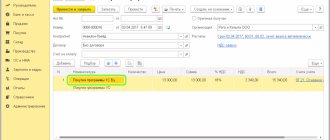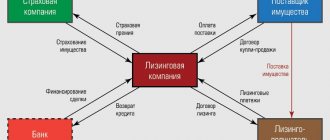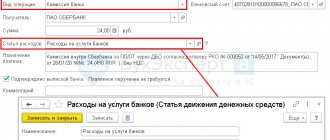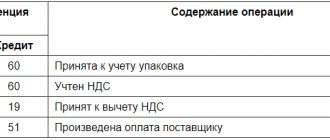Accounting in organizations serving the housing and communal services sector has some features. The nuances of accounting arise due to the diversity of income, mutual settlements, and the specifics of taxation. In the article we will tell you about accounting in housing and communal services, we will give examples of calculations with transactions.
Accounting in housing and communal services enterprises is not regulated by any specific regulations. Its conduct is subject to generally accepted rules, methods and laws relating to other organizations. In accordance with accounting standards, organizations operating in the field of housing and communal services can develop their own methods of conducting it, fixing them in their accounting policies.
Accounting for settlements with suppliers and consumers
The most common option for a management company to organize settlements with suppliers and consumers of utility payments is to conclude an agreement on the paid nature of the services provided. In this case, funds received from apartment owners are classified as income of the organization, and the cost of services invoiced by suppliers is classified as expenses.
| Account correspondence | Contents of operation | |
| Debit | Credit | |
| 20 | 60 | For the amount of utilities provided by suppliers for payment |
| 19 | 60 | VAT on supplier services |
| 68 | 19 | VAT offset |
| 62 | 90/1 | Bills submitted for payment to utility service consumers |
| 90/3 | 68 | VAT calculation |
| 90/2 | 20 | Write-off of expenses |
| 50, 51 | 62 | Receipt of funds to pay utility bills |
| 60 | 51 | Transferred to the supplier for utilities |
Postings in HOAs - basic examples
Reflection in the accounting records of the lessor organization of utility bills paid separately from the rent.
| № | Debit | Credit | Contents of operation |
| Accounting entries when reflecting utility services provided by energy supply organizations | |||
| 23, 25, 26, 44 | 60, 76 | The cost of consumed utilities, excluding VAT, was written off as production costs (selling expenses) | |
| 19 subaccount “VAT on work performed (services) of third parties” | 60, 76 | VAT has been accounted for (accrued) on utility services provided to the energy supply organization | |
| 68 subaccount “VAT calculations” | 19 subaccount “VAT on work performed (services) of third parties” | Accepted for deduction from the budget of VAT in the full amount for utility services provided to the energy supply organization | |
| Accounting entries when paying for utilities | |||
| 60, 76 | 50, 51 | The cost of consumed utilities was paid to the energy supplying organization | |
| Accounting entries when reflecting the tenant's share in the landlord's utility costs | |||
| 60, 76 | The tenant's utility expenses subject to compensation to the landlord are reflected | ||
Reflection in the accounting records of the lessor organization of calculations for utility bills, if the lessor organization paid the supplier for utilities during the reporting period, the consumer of which is the lessee organization, the lessor provides services to the tenant for an additional fee and, according to the lease agreement, utility payments are not included in rent and are paid by the tenant separately.
| № | Debit | Credit | Contents of operation |
| Accounting entries for payment of utility costs for the reporting period | |||
| 60, 76 | Payment of utilities for the reporting period is reflected | ||
| Accounting entries when calculating the tenant's debt for payment of utility costs for the reporting period | |||
| 60, 76 | The tenant's utility expenses for the reporting period are reflected | ||
| The landlord's remuneration is accrued for providing services to the tenant. The landlord's remuneration for the provision of services is set as a percentage of the cost of utilities | |||
| 68 subaccount “VAT calculations” | VAT is reflected on the remuneration amount | ||
| Accounting entries when repaying debt by the tenant | |||
| Payment of utility costs for the reporting period is reflected, taking into account the landlord's remuneration for providing services to the tenant | |||
Reflection of expenses for utility bills in the accounting records of the tenant organization.
| № | Debit | Credit | Contents of operation |
| Accounting entries when accruing debt for compensation of utility costs | |||
| 23, 25, 26, 44 | 60, 76 | Accrued utility bills excluding VAT | |
| 19 subaccount “VAT on work performed (services) of third parties” | 60, 76 | VAT on utility bills has been taken into account (accrued) | |
| 68 subaccount “VAT calculations” | 19 subaccount “VAT on work performed (services) of third parties” | Accepted for deduction from the budget of VAT on utility bills | |
| Accounting entries when paying off utility bills | |||
| 60, 76 | 50, 51 | The tenant organization has paid the debt to the landlord for current utility bills | |
Settlements of the management company with the ERCC
The management company can cooperate with the unified cash settlement center (UCSC) subject to the conclusion of an agency agreement. To account for settlements with the ERCC, a separate subaccount of account 76 is used.
| Account correspondence | Contents of operation | |
| Debit | Credit | |
| 51 | 76 | Funds received from ERCC |
| 76 | 62 | Utilities paid by homeowners |
| 62 | 90/1 | Income shown |
Accounting for target revenues
Receipts of funds from the budget for certain purposes are reflected in the account. 86 “Targeted financing”. The accounting entries are as follows:
| D/t | K/t | Operations |
| 50,51 | 86 | Budget revenues |
| 20 | 10,60 | Write-off of raw materials/services when performing targeted work |
| 86 | 20 | Expenses are reflected in the structure of target funds |
Since the responsibility to form a capital repair fund (which is essentially a target fund) today is assigned to the residents of apartment buildings, the management company must take into account monthly incoming funds as target funds. According to Art. 251 of the Tax Code of the Russian Federation, contributions for major repairs are not included in the tax base for profits and are accounted for separately. Usually, subaccounts to the account are used for this. 51 and 86. Accumulated capital repair funds should not be diverted for other purposes. If an inappropriate expense occurs, the Federal Tax Service will consider the amount of expenses as revenue, and it will be included in the taxable base.
The management company has the right to shift the responsibility for collecting payments, for example, to the ERCC by concluding an agency agreement with it. The ERCC distributes the amount received from payers between resource-supplying enterprises and management companies. To account for the relationship with the ERCC, an account is used. 76-5 “Settlements with the ERCC”. The accounting reflection is as follows:
| D/t | K/t | Operations |
| 51 | 76-5 | Receipt of funds from the ERCC to the management company |
| 76-5 | 62 | Payments for housing and communal services from the population |
| 62 | 90-1 | Revenue |
If resource suppliers present an invoice to the management company for the services provided, and the ERCC already pays for them, then an offset between the companies is inevitable.
Accounting reflects the transaction as follows:
| D/t | K/t | Operations |
| 20 | 60 | Bills for housing and communal services have been received |
| 60 | 76-5 | Settlement for the amount of payment made by ERKTs to the housing and communal services supplier |
| 76-5 | 62 | |
| 62 | 90-1 | Revenue |
| 90-2 | 20 | The cost of services has been written off |
Accounting for costs of managing apartment buildings
An important nuance of accounting for the property and obligations of housing and communal services organizations is the obligation to keep separate records of income and expenses by type. In accordance with this, real estate management services are accounted for separately on account 20. Since the main income of such organizations is revenue from managing an apartment building, expenses for this type of activity should be taken into account as basic, and not as general business expenses.
Account 26 should reflect expenses not directly related to the main activity.
Account 26 in the management company is used to reflect expenses for other activities.
Utility subscriber
The leased property is the property of the lessor. That is, it is he who acts as a subscriber to public services. This conclusion can be drawn from the provisions of Article 608, paragraph 2 of Article 539 and Article 548 of the Civil Code of the Russian Federation.
At the same time, with regard to the supply of electricity, the legislation does not prohibit the energy supply organization from supplying energy not only to the subscriber (lessor), but also to other organizations dependent on it (for example, tenants). That is, the subscriber (lessor), with the consent of the energy supply organization, has the right to transfer the energy received by him through the connected network to the sub-subscriber (tenant). And the sub-subscriber (tenant) must be able to receive energy through special equipment, as well as connect to the power grid of the subscriber (lessor).
This procedure follows from Article 545 of the Civil Code of the Russian Federation. In general, it also applies to relations related to the supply of other public services (heat, gas, water, etc.) (Article 548 of the Civil Code of the Russian Federation).
The Civil Code of the Russian Federation does not establish any other requirements other than those indicated above. This allows the tenant to choose between various ways of formalizing relations for receiving utilities and their subsequent payment.
Tax accounting at housing and communal services enterprises
Organizations operating in the housing and communal services system can apply both general and special taxation regimes. OSNO is the easiest to use. But it should be taken into account that the use of such a system causes a fairly high tax burden. The organization is a payer of income tax and VAT.
For most companies working in the housing and communal services sector, the simplified tax system is preferable. This option is acceptable when:
- the number of company employees does not reach 100 people;
- income in the reporting period does not exceed 60,000,000 rubles;
- the cost of fixed assets on the organization’s balance sheet did not reach 100,000,000 rubles.
By choosing the “simplified” system, the company receives an exemption from the obligation to pay income tax at a rate of 20% and VAT. These payments are replaced by the tax provided for by the simplified tax system at a rate of 15% if taxation is carried out according to the “income-expenses” system, or at a rate of 6% if income is taxed.
The simplified tax system is attractive for companies whose activities most often result in a loss. In this case, the tax rate for them will be 1% of their income.
Payment for services as part of the rent
In this case, the tenant compensates the cost of consumed utilities to the landlord as part of the rent. The possibility of using this option follows from the legislation governing rental relations.
Thus, in accordance with paragraph 2 of Article 616 of the Civil Code of the Russian Federation, the tenant must bear the costs of maintaining the leased property, unless otherwise provided by law or agreement. At the same time, the tenant is not obliged to pay utility bills directly to their suppliers. In this situation, the landlord, who is a subscriber under an agreement with public utilities, has the right to allow the tenant (subsubscriber) to use its networks. For this, the tenant must compensate the landlord not only for the rent, but also for the cost of the utilities he consumes.
The specified agreement between the lessor and the lessee is a method of forming the cost of rent and cannot be qualified as a separate agreement (see, for example, paragraph 22 of the information letter of the Presidium of the Supreme Arbitration Court of the Russian Federation dated January 11, 2002 No. 66).
There are two ways to include the amount of compensation for utilities in the rent:
- The amount of rent, taking into account utility costs, is determined in a fixed form. The cost of utilities is not specified separately in the contract;
- the amount of rent in the contract consists of two parts: a fixed payment (the rent itself) and a variable payment (utility costs consumed by the tenant in the billing period).
Using the first method may be unprofitable in some cases. The fact is that the actual cost of utilities tends to change. Such changes may occur several times during the year. However, in the general case, the parties can take them into account in the agreement and, accordingly, adjust the amount of rent only once a year (clause 3 of Article 614 of the Civil Code of the Russian Federation). In addition, the amount of payment for some services directly depends on the size of their consumption, and it is not always possible to predict in advance how much, for example, electricity a tenant will consume. Thus, a situation may arise when the utilities actually consumed by the tenant are not covered by the amount of utility payments included in the rent.
When using the second method, the variable part, that is, the cost of utilities, can change every month depending on changes in tariffs or the amount of services consumed. At the same time, the provisions of paragraph 3 of Article 614 of the Civil Code of the Russian Federation regarding the inadmissibility of rent revision more than once a year are not violated. The condition on the amount of rent should remain unchanged, establishing the method of its calculation, and not the amount (clause 11 of the information letter of the Presidium of the Supreme Arbitration Court of the Russian Federation dated January 11, 2002 No. 66).
The total amount of utilities and energy supplies is determined by actual consumption based on invoices issued by suppliers. The share of expenses compensated by the tenant under the lease agreement (variable part of the rent) can be determined in the following ways:
- by the share of premises occupied by the tenant;
- according to the readings of individual meters;
- based on the power of the equipment used by the tenant and its operating time.
Set out the calculation method in the lease agreement (Clause 1, Article 615 of the Civil Code of the Russian Federation).
When compensation for utility costs is included in rental payments, primary documents for utility payments are not drawn up separately. It is enough for the landlord to complete the lease documents and attach copies of utility documents (invoices, calculations), if such a condition is provided for in the lease agreement.
Accounting statements of housing and communal services organization
The responsibilities of a legal entity working in the housing and communal services sector include maintaining accounting records and providing reporting. This obligation applies to any company, regardless of which taxation system is applied. The reporting set for the year includes:
- balance sheet;
- Profits and Losses Report;
- Explanation of the balance sheet and income statement;
- statement of changes in equity;
- cash flow statement.
Interim reporting includes only the first two forms. If the organization belongs to a small business, the reporting also includes only the balance sheet and income statement. When applying the simplified tax system, reporting is provided in a simplified form and includes a balance sheet, a statement of financial results and a report on the intended use of funds.
In addition, housing and communal services organizations regularly provide information on the number of personnel and data on income tax 2-NDFL. If an enterprise uses OSNO, then it is necessary to submit a tax return for income tax and VAT. Organizations that use the simplified tax system submit a single tax return even if there are no income or expenses in the reporting period.
Accounting entries when reflecting utility costs
Reflection in the accounting records of the lessor organization of utility bills paid separately from the rent.
| № | Debit | Credit | Contents of operation |
| Accounting entries when reflecting utility services provided by energy supply organizations | |||
| 23, 25, 26, 44 | 60, 76 | The cost of consumed utilities, excluding VAT, was written off as production costs (selling expenses) | |
| 19 subaccount “VAT on work performed (services) of third parties” | 60, 76 | VAT has been accounted for (accrued) on utility services provided to the energy supply organization | |
| 68 subaccount “VAT calculations” | 19 subaccount “VAT on work performed (services) of third parties” | Accepted for deduction from the budget of VAT in the full amount for utility services provided to the energy supply organization | |
| Accounting entries when paying for utilities | |||
| 60, 76 | 50, 51 | The cost of consumed utilities was paid to the energy supplying organization | |
| Accounting entries when reflecting the tenant's share in the landlord's utility costs | |||
| 60, 76 | The tenant's utility expenses subject to compensation to the landlord are reflected | ||
Reflection in the accounting records of the lessor organization of calculations for utility bills, if the lessor organization paid the supplier for utilities during the reporting period, the consumer of which is the lessee organization, the lessor provides services to the tenant for an additional fee and, according to the lease agreement, utility payments are not included in rent and are paid by the tenant separately.
| № | Debit | Credit | Contents of operation |
| Accounting entries for payment of utility costs for the reporting period | |||
| 60, 76 | Payment of utilities for the reporting period is reflected | ||
| Accounting entries when calculating the tenant's debt for payment of utility costs for the reporting period | |||
| 60, 76 | The tenant's utility expenses for the reporting period are reflected | ||
| The landlord's remuneration is accrued for providing services to the tenant. The landlord's remuneration for the provision of services is set as a percentage of the cost of utilities | |||
| 68 subaccount “VAT calculations” | VAT is reflected on the remuneration amount | ||
| Accounting entries when repaying debt by the tenant | |||
| Payment of utility costs for the reporting period is reflected, taking into account the landlord's remuneration for providing services to the tenant | |||
Reflection of expenses for utility bills in the accounting records of the tenant organization.
| № | Debit | Credit | Contents of operation |
| Accounting entries when accruing debt for compensation of utility costs | |||
| 23, 25, 26, 44 | 60, 76 | Accrued utility bills excluding VAT | |
| 19 subaccount “VAT on work performed (services) of third parties” | 60, 76 | VAT on utility bills has been taken into account (accrued) | |
| 68 subaccount “VAT calculations” | 19 subaccount “VAT on work performed (services) of third parties” | Accepted for deduction from the budget of VAT on utility bills | |
| Accounting entries when paying off utility bills | |||
| 60, 76 | 50, 51 | The tenant organization has paid the debt to the landlord for current utility bills | |








